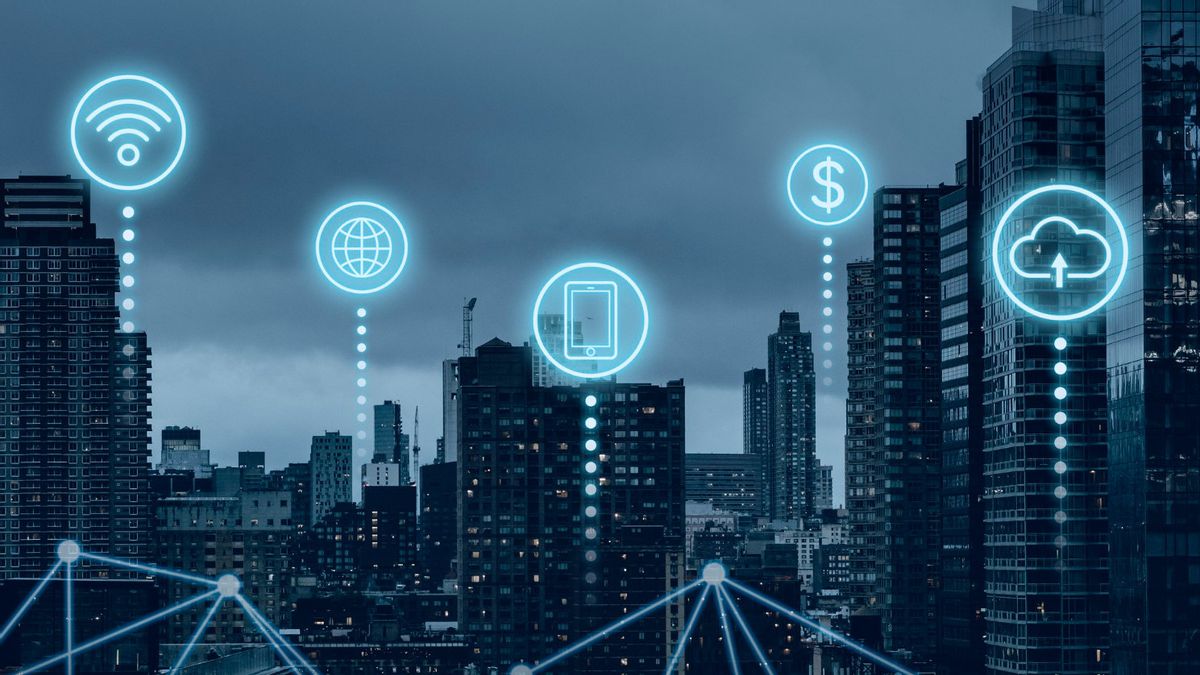YOGYAKARTA - Wi-Fi is a data transfer technology that is familiar to many people today. But along with the technological developments that are running so fast, the presence of Wi-Fi will be shifted by Li-Fi. What is Li-Fi and how does it work?
For some people, it may still be foreign to the term Li-Fi. Li-Fi is predicted to be a new wireless network technology that will replace Wi-Fi. This technology is an advantage and advantage over Wi-Fi as a data transfer medium. Therefore, you need to know what Li-Fi is and its advantages are.
Light Fidelity (Li-Fi) is a wireless network technology that functions as an introductory medium or data transfer. Although its usefulness is the same as Wi-Fi, Li-Fi is much more sophisticated and has a number of advantages. This new technology is the result of experiments conducted by University College and Oxford University.
Li-Fi technology has actually been demonstrated since 2012. Li-Fi has been successfully applied to a pair of Casao smartphones at the Consumer Electronics Show in Las Vegas at that time. This technology presents a speed many times higher than Wi-Fi. Li-Fi is designed as a wireless light-based data transfer medium.
In contrast to Wi-Fi technology that transfers data using electromagnetic waves at radio frequencies. Li-Fi transfers data utilizing light from LED lights. Li-Fi technology is equipped with a chip that modulates light for optical data transmission.
As stated above, Li-Fi transfers data by utilizing light. To be able to run Li-Fi, two light sources are needed that are installed on each device.
Light sources that can be used for Li-Fi are photo detectors (Light Sensors) and LEDs. When the LED light turns on, the sensor light at the other end of the device will capture and detect as a binary 1. The amount of light in the LED will send a message captured by the light detector on the other device.
LED lights equipped with Li-Fi technology will emit signals by modulating their light intensity which reaches a speed of tens of thousands of variations per second. Light pulse transmission occurs between Access Points (employees), which are usually placed on the ceiling to maximize the reach of light files, and Dongle (receivers) connected to devices such as smartphones, computers, or tablets.
Li-Fi technology is a better data introduction than Wi-Fi because its transmission is running very fast. The high speed of transmission of Li-Fi is due to LED which is a semiconductor with different properties from other types of lights. LED can change status to turn on and off in just a few nanoseconds or billion seconds. If converted in data speed, nanoseconds are the same or equivalent to 1 Gbits/s, which means 10 times faster than Wi-Fi which is only able to transfer 100 Mbits/s data.
Present as the latest wireless network technology innovation, Li-Fi offers a number of advantages. Here are the advantages you will get if you use Li-Fi later.
Li-Fi technology is said to be much safer from hacking than Wi-Fi. The process of data transfer on LiFi remains limited to the specified area so that it can maintain sensitive data and avoid cyber crime.
Li-Fi is able to make data transfers very quickly with connectivity speeds reaching 1 Gbps.
Li-Fi provides consistent connectivity so that users can access and use data more stably.
Li-Fi technology comes without radio frequency pollution so it doesn't have an impact on health.
That's a review of what Li-Fi is, how it works, and its advantages over Wi-Fi. Li-Fi will be an innovation in the world of telecommunications in line with the rapid development of digital technology.
Stay up to date with the latest domestic and other overseas news on VOI. You present the latest and most updated nationally and internationally.
The English, Chinese, Japanese, Arabic, and French versions are automatically generated by the AI. So there may still be inaccuracies in translating, please always see Indonesian as our main language. (system supported by DigitalSiber.id)








